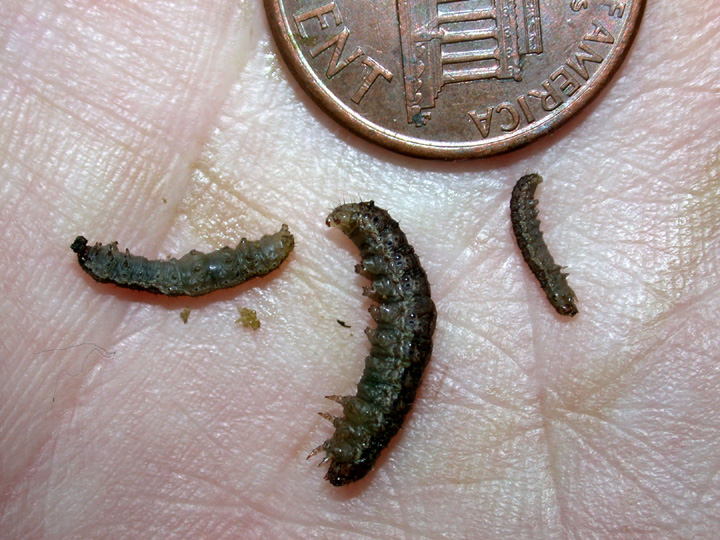Could this be a cutworm year? Definitely a maybe. Rainfall has delayed field work (e.g. weedy fields) and corn planting (i.e., lots of emerging corn). Many arriving black cutworm moths have been captured since late March. Warmer temperatures have accelerated development of black cutworm larvae, so that some have undoubtedly moved on and will not be present to feed on emerging corn. Refer to the accompanying map of accumulated heat units (base 50°F) from April 1. To date, according to the black cutworm developmental model, larvae are large enough throughout most of Indiana to be cutting corn, yet very little corn is up at this time. These next couple weeks will be the critical time for cutworm scouting, especially in high-risk fields (i.e. corn that has emerged, or will within the few days).
Scout by inspecting 20 consecutive plants in each of 5 areas of a field (100 plants) for cutworms and feeding activity. Be sure to check areas that had an accumulation of weedy growth before or at the time of planting. Count and record the number of plants cut or damaged and determine the percentage of plants affected. Also collect black cutworm larvae (usually found near the damage, just beneath the surface during the day) and determine the average instar stage. A foliar, rescue insecticide may be necessary if 3% or more of the plants are damaged and black cutworm’s average larval instar is from 4 to 6. An instar guide is available inside the front cover of the Corn and Soybean Field Guide (a.k.a., pocket guide).

Black cutworm instars, 3rd through 5th, all capable of severely damaging corn. (Photo Credit: John Obermeyer)

Cut corn seedling with black cutworm larva found just beneath the soil surface. (Photo Credit: John Obermeyer)
Since black cutworm has been a very minor pest across most of the Midwest in many years, producers may have a false sense of security with the seed-applied insecticides and/or Bt-traited corn – these offer plant protection that is inconsistent, at best. This is a case when timely scouting and rescue treatments of foliar insecticides when necessary are the tried-and-true approach with this stand reducer.
The following classic vids address the many interacting variables that must converge before black cutworm is a significant risk to our corn crop. We hope these vids help make you more aware…happy scouting!



